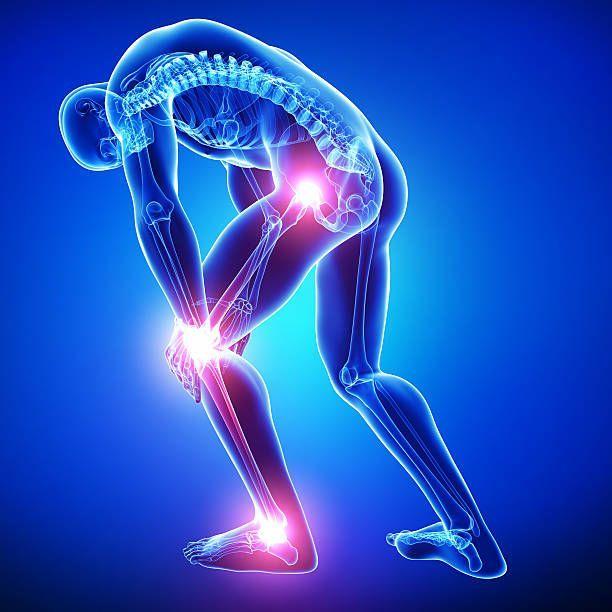Understanding the Basics of Muscle and Joint Pain
Muscle and joint pain are common afflictions that can significantly impact daily life. Understanding the basics of these types of pain is crucial for effective management and relief. Muscle pain, also known as myalgia, can range from mild discomfort to severe, debilitating pain. It often results from overuse, tension, or injury to the muscles. On the other hand, joint pain, or arthralgia, refers to discomfort, soreness, or inflammation in the joints, which can be caused by various factors such as injury, arthritis, or autoimmune diseases.
Prosoma 350 mg is a medication primarily used to treat muscle spasms and discomfort associated with musculoskeletal conditions like strains, sprains, and injuries. It contains the active ingredient carisoprodol, which works by affecting the communication between nerves in the central nervous system and helping to relax muscles.
Causes of Muscle and Joint Pain
Muscle Pain Causes
- Overexertion: Engaging in strenuous physical activity or repetitive motions without proper rest can lead to fatigue and .
- Injury: Trauma or strain to the muscles due to accidents, falls, or sports injuries can result in acute
- Tension: Emotional stress and tension can cause stiffness and , particularly in the neck, shoulders, and back.
- Medical Conditions: Certain medical conditions such as fibromyalgia, myofascial and infections like the flu can cause widespread .
Joint Pain Causes
- Arthritis: The most common cause of joint pain, arthritis, includes conditions like osteoarthritis, rheumatoid arthritis, and gout, which result in inflammation and damage to the joints.
- Injury: Trauma or damage to the joints from accidents, falls, or sports injuries can lead to acute or chronic joint pain.
- Autoimmune Diseases: Conditions such as lupus, rheumatoid arthritis, and psoriatic arthritis involve the immune system attacking the joints, causing inflammation and pain.
- Infection: Bacterial or viral infections can affect the joints, leading to conditions like septic arthritis.
- Pain o soma 500mg tablet is a skeletal muscular relaxant that aids with edema, inflammation, and stiffness. To be effective, it must inhibit the neurotransmitters in the brain that manifest these symptoms. Success in reducing muscle stiffness or spasm allows for improved muscular activity.
Symptoms of Muscle and Joint Pain
Muscle Pain Symptoms
- Aching or soreness in the muscles
- Stiffness or difficulty moving
- Muscle cramps or spasms
- Tenderness to the touch
- Weakness or fatigue
Joint Pain Symptoms
- Pain or discomfort in the joints
- Swelling or inflammation
- Stiffness, especially after periods of inactivity
- Redness or warmth around the joint
- Limited range of motion
Diagnosis and Treatment Options
Diagnosis
- Physical Examination: A healthcare provider will conduct a physical examination to assess the affected muscles and joints, checking for tenderness, swelling, and range of motion.
- Medical History: Providing details about symptoms, medical history, and any recent injuries or activities can help in diagnosing the underlying cause of the pain.
- Imaging Tests: X-rays, MRI scans, or ultrasound may be ordered to evaluate the condition of the muscles and joints and identify any abnormalities or damage.
Treatment Options
- Medications: Over-the-counter relievers such as ibuprofen or acetaminophen can help alleviate mild to moderate and joint . In cases of severe pain or inflammation, prescription medications may be necessary.
- Physical Therapy: A tailored exercise program designed by a physical therapist can help improve strength, flexibility, and range of motion, reducing pain and preventing future injuries.
- Heat and Cold Therapy: Applying heat packs or cold compresses to the affected area can help relieve pain, reduce inflammation, and promote healing.
- Lifestyle Modifications: Adopting healthy habits such as maintaining a balanced diet, staying hydrated, getting adequate rest, and avoiding prolonged sitting or standing can help prevent and joint .
- Alternative Therapies: Techniques like massage therapy, acupuncture, chiropractic adjustments, and herbal supplements may provide relief for some individuals.
- Surgery: In cases of severe injury or conditions like arthritis that do not respond to conservative treatments, surgery may be recommended to repair damaged tissues or replace the affected joint.
Preventing Muscle and Joint Pain
Maintain a Healthy Lifestyle
- Exercise Regularly: Engage in a combination of cardiovascular, strength training, and flexibility exercises to keep muscles and joints strong and flexible.
- Practice Good Posture: Maintain proper posture while sitting, standing, and lifting to reduce strain on the muscles and joints.
- Use Proper Equipment: Ensure that equipment and gear used for sports and physical activities are appropriate for your body size and fitness level to minimize the risk of injury.
- Take Breaks: When performing repetitive tasks or sitting for long periods, take regular breaks to stretch and rest your muscles and joints.
- Stay Hydrated: Drink plenty of water throughout the day to keep muscles and joints lubricated and reduce the risk of cramps and stiffness.
Conclusion
Understanding the causes, symptoms, diagnosis, and treatment options for and joint is essential for effectively managing these common conditions. By incorporating lifestyle modifications, seeking appropriate medical care, and adopting preventive measures, individuals can alleviate pain, improve mobility, and enhance overall quality of life.
